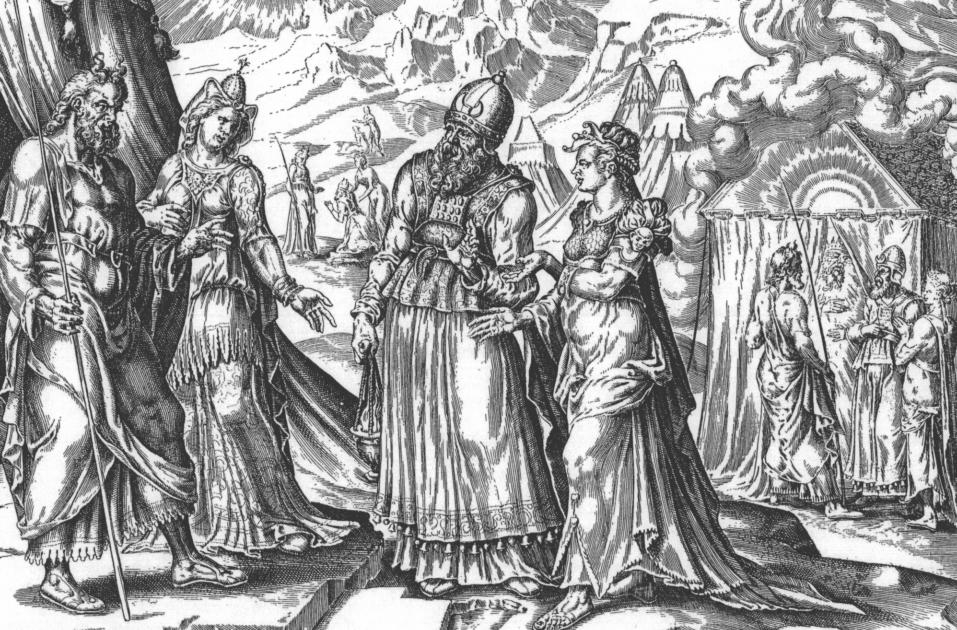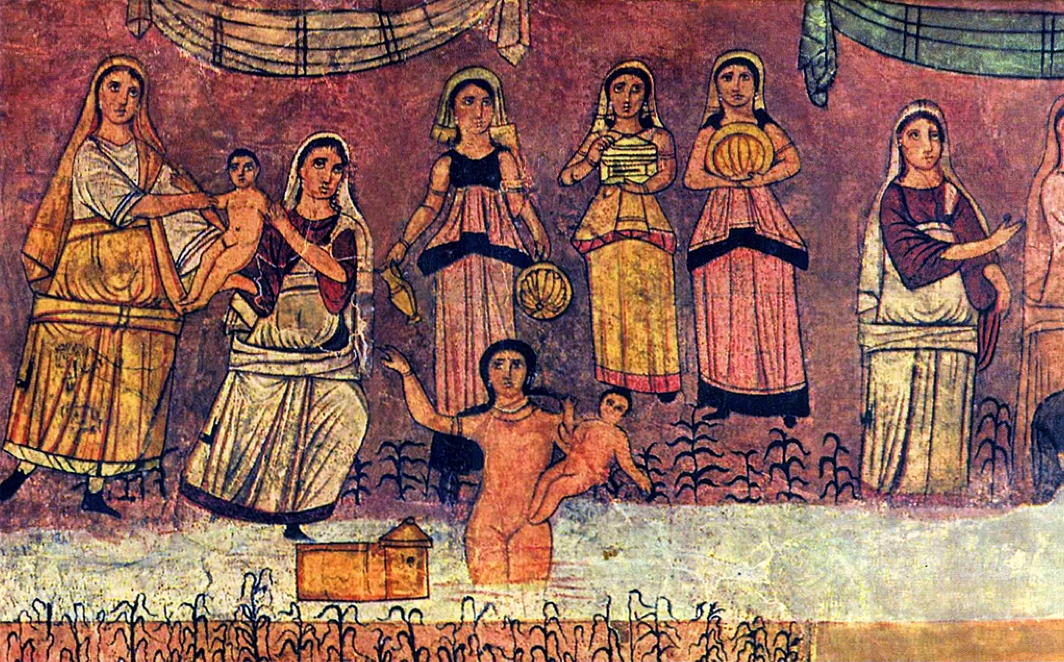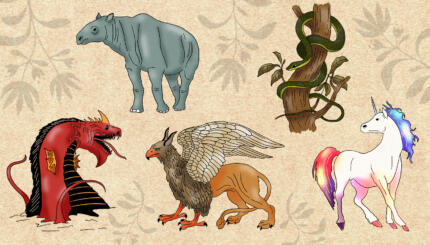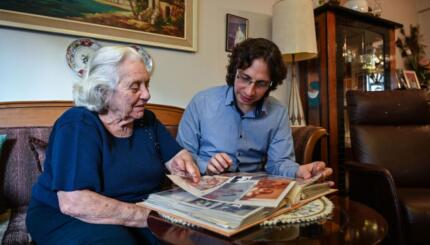When Miriam first appears in the Bible, she is but a child, and not even named; eventually she comes to be known, along with her siblings Moses and Aaron, as one of the three figures who led the Israelites out of Egypt. Like so many women in the Bible, her character is under-developed, at least compared to her brothers; yet her presence at key moments of the Torah’s narrative testifies to her prominence.
At the beginning of the book of Exodus, when the pharaoh decrees that all male Israelite babies are to be drowned, Moses’s mother saves him by placing him on the Nile in a basket. We are told that Moses’s sister stood on the bank of the river to find out what would happen to the infant. And when the pharaoh’s daughter discovers the basket, and realizes that it must be a Hebrew child, Miriam is quick to act. She offers to get a Hebrew nursemaid for the baby, and fetches none other than Moses’s — and her — mother.
Throughout this episode, Miriam, like her mother, is not given a name; she is merely the sister of the boy in the basket. Yet she is part of a core group of female characters, named or not, who drive the narrative at the beginning of Exodus. The midwives, Shifra and Puah, who refuse to kill the male Hebrew infants at birth despite the pharaoh’s order; Moses’s mother, who ensures the survival of her child; even Pharaoh’s daughter, who takes Moses in—all, along with Miriam, are the active figures in the story, the proto-saviors of the Israelite people in Egypt, all concentrated within a mere eighteen verses spanning Exodus 1 and 2.
When Miriam next appears in the narrative, the Israelites have left Egypt, led by Moses, and have just crossed the Sea of Reeds (traditionally, though erroneously, identified as the Red Sea). Upon their miraculous rescue from the Egyptian army, now drowned, Moses and the Israelites sing a hymn to God’s power, known as the Song of the Sea (Exodus 15:1–18). When they have finished, Miriam — now identified as a prophetess — takes a timbrel, and, along with the other Israelite women, dances and plays while singing the same hymn that Moses had just sung: “Sing to the Lord, for he has triumphed gloriously; horse and rider he has hurled into the sea!” (Exodus 15:21).
With your help, My Jewish Learning can provide endless opportunities for learning, connection and discovery.
In taking up the Song of the Sea, Miriam does more than simply echo Moses. She provides space for the Israelite women, so often subsumed into the Israelite community, to have their own moment of celebration. In the entire Torah, this is indeed the only place where the Israelite women act as a separate body. It may be no coincidence that this is the time and place, or that it is Miriam who steps forward. The drowning of the Pharaoh and the Egyptians in the waters of the Sea of Reeds echoes and reverses Pharaoh’s decree to drown the Israelite boys in the Nile. The women who saved Moses as a baby have now seen their brave choices pay off in the final elimination of the Egyptians. And who better than Miriam to lead them in celebrating their accomplishments?
Miriam’s status as a leader, established at the Sea of Reeds, becomes a source of some complication as the Israelites move through the wilderness. In Numbers 12, Miriam and her brother Aaron complain that, despite being his siblings, they do not have the same close prophetic relationship with God that Moses does: “Has the Lord spoken only through Moses? Has he not spoken through us as well?” (Numbers 12:2). Given her role early in Exodus, and her status as a prophetess in Exodus 15, Miriam may well feel that she is being excluded from her rightful place in God’s confidences. But God declares that she is in the wrong: only with Moses does God “speak mouth to mouth, plainly and not in riddles” (Numbers 12:8). When the divine communication is over, Miriam finds herself struck with skin disease (commonly translated as leprosy, but not in fact identifiable as that specific ailment). Aaron and Moses plead for her to be healed, but God declares that she will “bear her shame” for seven days (Numbers 12:14). It is a mark of her status that, despite being so prominently punished for her insubordination, the Israelites do not continue on their journey until Miriam is healed.

That is the last episode of Miriam’s life told in the Torah. Her death is recorded in the first verse of Numbers 20, at the site of Kadesh in the wilderness. Like her siblings, she does not see the promised land.
Less than a handful of episodes, yet Miriam is said by the prophet Micah to have been sent along with Moses and Aaron to redeem Israel from Egypt. In later Jewish tradition Miriam’s role only grows in stature. Despite there being no mention of her having any children in the Bible, the tradition makes her the ancestor of both Bezalel, the architect of the Tabernacle, and of King David. Because she was labeled as a prophet, there are stories about her predicting that Moses would save Israel. Perhaps the most prominent postbiblical tradition, however, is that of Miriam’s well, a miraculous source of water that accompanied the Israelites through the wilderness — until Miriam’s death, when it disappeared.
Want to get to know more amazing, complicated, and relatable biblical personalities? Sign up for a special email series here.



